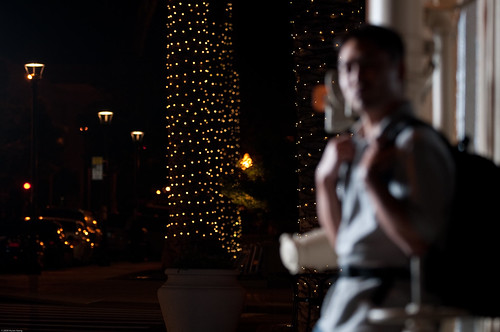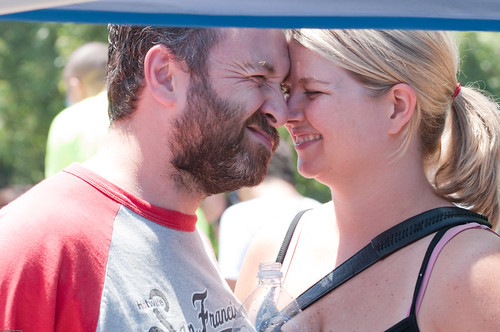I haven't picked up my camera much lately, as you can tell by the recent dearth of blog postings. There are a few factors at play that have discouraged me from shooting:
1. Work has kept me very busy.
2. My right arm is starting to progress from tendonitis to full blown carpal tunnel syndrome.
3. My computer has probably caught a virus or two (for the umpteenth time!) which has slowed it down considerably. Copying images off a CF card takes 2-3 times longer than before...and let's not talk about trying to open Photoshop!

To combat the last two factors, in the last few weeks I've begun to shoot in RAW+JPEG mode. By saving my shots in this way I can upload the JPEG's to Flickr right away without having to post-process the RAW files first. I save the RAW files for future tweaking after I buy a faster computer and hopefully after my arm heals.
If you follow baby fisheye, you know that this is sacrilegious because I
prefer shooting in RAW over JPEG. But given the choice between sitting on my hands and doing nothing, and shooting in JPEG, well, there's really no choice.
Shooting in JPEG and uploading the images without post-processing present some unique challenges:
1. The white balance needs to be set correctly in the camera. I cheat and use Auto :-)
2. No cropping means I must pay extra attention while composing each shot.
3. The lighting has to be close to perfect as possible, since I can't tweak the exposure after the shot.
I think this whole shooting in JPEG business has been a blessing in disguise. It's made me much more aware of how I compose and light my shots. I can no longer take shots on autopilot and rely on Lightroom/Photoshop to fix my problems.
 In my previous post, I stated that focusing on a subject at night is very difficult, but I managed to get a more or less clear shot of my buddy Brian. How did I do it?
1. Stabilized my camera on a tripod.
2. Had Brian shine a flashlight on his face.
3. Autofocused on his face.
4. Switched focus to manual, so the lens did not refocus when I pressed the shutter release.
5. Asked Brian to turn off the flashlight and hold very still.
6. Snapped off a shot and examined the LCD. If something was off (focus, composition, and/or exposure), repeat the process.
After what must have been an hour, I finally got the shot above. It was hard work for the both of us!
By the way, there is a hot shoe flash shot through an umbrella positioned above and in front of (camera left) Brian's face.
Here's what it looked like when Brian pointed his flashlight directly at his face:
In my previous post, I stated that focusing on a subject at night is very difficult, but I managed to get a more or less clear shot of my buddy Brian. How did I do it?
1. Stabilized my camera on a tripod.
2. Had Brian shine a flashlight on his face.
3. Autofocused on his face.
4. Switched focus to manual, so the lens did not refocus when I pressed the shutter release.
5. Asked Brian to turn off the flashlight and hold very still.
6. Snapped off a shot and examined the LCD. If something was off (focus, composition, and/or exposure), repeat the process.
After what must have been an hour, I finally got the shot above. It was hard work for the both of us!
By the way, there is a hot shoe flash shot through an umbrella positioned above and in front of (camera left) Brian's face.
Here's what it looked like when Brian pointed his flashlight directly at his face:














